Recombinant Human MIIP Protein, GST-tagged
| Cat.No. : | MIIP-5340H |
| Product Overview : | Human MIIP full-length ORF ( AAH08068.1, 1 a.a. - 388 a.a.) recombinant protein with GST-tag at N-terminal. |
- Specification
- Gene Information
- Related Products
- Case Study
- Application
- Download
| Species : | Human |
| Source : | Wheat Germ |
| Tag : | GST |
| Description : | This gene encodes a protein that interacts with the oncogene protein insulin-like growth factor binding protein 2 and may function as an inhibitor of cell migration and invasion. This protein also interacts with the cell division protein 20 and may be involved in regulating mitotic progression. This protein may function as a tumor suppressor by inhibiting the growth or certain cancers. [provided by RefSeq, Sep 2011] |
| Molecular Mass : | 69.2 kDa |
| AA Sequence : | MVEAEELAQLRLLNLELLRQLWVGQDAVRRSVARAASESSLESSSSYNSETPSTPETSSTSLSTSCPRGRSSVWGPPDACRGDLRDVARSGVASLPPANCQHQESLGRPRPHSAPSLGTSSLRDPEPSGRLGDPGPQEAQTSRSILAQQSKLSKPRVTFSEESAVPERSWRLRPYLGYDWIAGSLDTSSSITSQPEAFFSKLQEFRETNKEECICSHPEPQLPGLRESSGSGVEEDHECVYCYRVNRRLFPVPVDPGTPCRLCRTPRDQQGPGTLAQPAHVRVSIPLSILEPPHRYHIHRRKSFDASDTLALPRHCLLGWDIFPPKSEKSSAPRNLDLWSSVSAEAQHQKLSGTSSPFHPASPMQMLPPTPTWSVPQVPRPHVPRQKP |
| Applications : | Enzyme-linked Immunoabsorbent Assay Western Blot (Recombinant protein) Antibody Production Protein Array |
| Notes : | Best use within three months from the date of receipt of this protein. |
| Storage : | Store at -80 centigrade. Aliquot to avoid repeated freezing and thawing. |
| Storage Buffer : | 50 mM Tris-HCI, 10 mM reduced Glutathione, pH=8.0 in the elution buffer. |
| Gene Name | MIIP migration and invasion inhibitory protein [ Homo sapiens ] |
| Official Symbol | MIIP |
| Synonyms | MIIP; migration and invasion inhibitory protein; migration and invasion-inhibitory protein; FLJ12438; IIp45; invasion inhibitory protein 45; IGFBP2-binding protein; invasion-inhibitory protein 45; IIP45; RP5-1077B9.4; FLJ38609; |
| Gene ID | 60672 |
| mRNA Refseq | NM_021933 |
| Protein Refseq | NP_068752 |
| MIM | 608772 |
| UniProt ID | Q5JXC2 |
| ◆ Recombinant Proteins | ||
| MIIP-3341R | Recombinant Rat MIIP Protein, His (Fc)-Avi-tagged | +Inquiry |
| MIIP-141H | Recombinant Human MIIP, His-tagged | +Inquiry |
| MIIP-5340H | Recombinant Human MIIP Protein, GST-tagged | +Inquiry |
| MIIP-6601HF | Recombinant Full Length Human MIIP Protein, GST-tagged | +Inquiry |
| MIIP-3685R | Recombinant Rat MIIP Protein | +Inquiry |
| ◆ Cell & Tissue Lysates | ||
| MIIP-4314HCL | Recombinant Human MIIP 293 Cell Lysate | +Inquiry |
Case 1: Gao Y, et al. Cell Death Dis. 2022
Although MIIP is reported to exert tumor suppressive functions by repressing proliferation and metastasis of cancer cells, the detailed mechanism is poorly understood. In the present study, researchers found MIIP is a favorable indicator of prognosis in triple-negative breast cancer. MIIP could inhibit tumor angiogenesis, proliferation, and metastasis of triple-negative breast cancer cells in vivo and in vitro. Mechanistically, MIIP directly interacted with ITGB3 and suppressed its downstream signaling. As a result, β-catenin was reduced due to elevated ubiquitin-mediated degradation, leading to downregulated VEGFA production and epithelial mesenchymal transition. More importantly, we found RGD motif is essential for MIIP binding with ITGB3 and executing efficient tumor-suppressing effect.
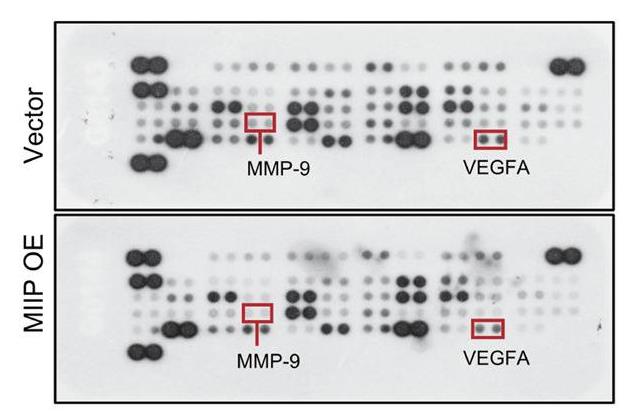
Fig1. Human angiogenesis array was performed to determine changes of angiogenesis-related factors after MIIP was overexpressed.
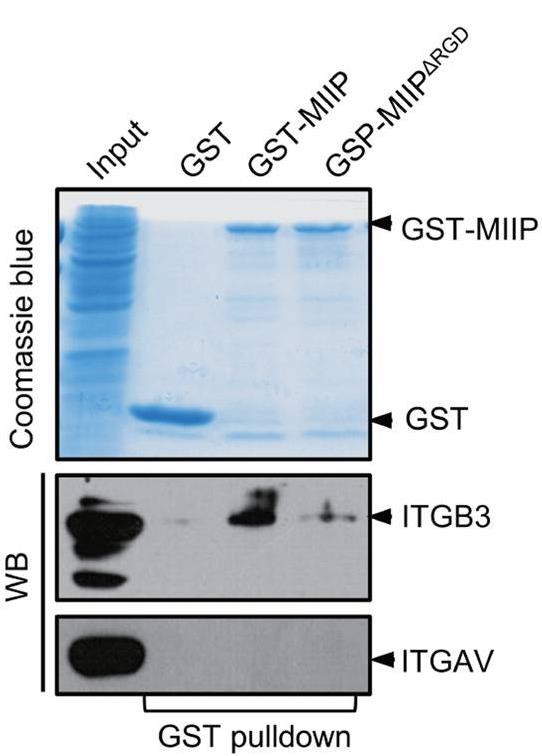
Fig2. GST pulldown was performed to determine the direct interaction between ITGB3 or ITGAV and MIIP or MIIP with deleted RGD motif.
Case 2: Du Y, Wang P. Pathol Res Pract. 2019
The MIIP protein was initially discovered in a yeast two-hybrid screen for proteins that interact and inhibit the migration and invasion-promoting protein IGFBP2. This study aims to evaluate the biological effects of MIIP in breast cancer by targeting IGFBP2. Reverse transcription quantitative real-time polymerase chain reaction and Western blotting were used to evaluate the abnormal expression of MIIP and IGFBP2 in breast cancer tissue or breast cancer cell lines. Transfection assay was used to overexpress MIIP protein in breast cancer cells. MTT assay and colony formation assay were used to detect cell viability of breast cancer cells after MIIP overexpression. Transwell and wound-healing assays were used to detect cell invasion and migration after MIIP overexpression.
The results showed MIIP was significantly decreased and IGFBP2 was significantly increased in breast cancer tissues versus para cancerous. Breast cancer tissues of HER2 overexpression and Basal-like were more significant than Luminal A and Luminal B. MIIP was obviously downregulated and IGFBP2 was upregulated in MDA-MB-231, SKBR3 and MCF-7 versus MCF-10A especially in MDA-MB-231. Cell proliferation, cell migration and cell invasion were significantly inhibited after overexpression of MIIP. IGFBP2 was downregulated after overexpression of MIIP. The effects of MIIP on cell proliferation, cell migration and invasion were significantly reversed by IGFBP2.
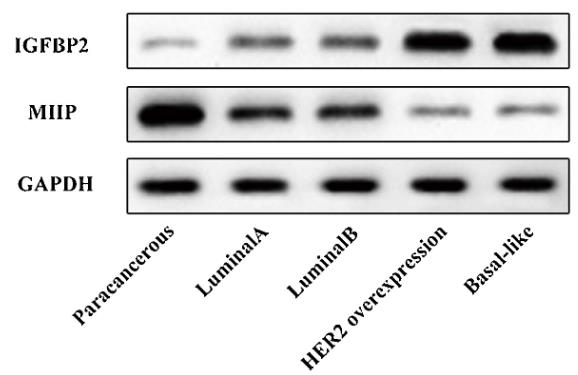
Fig1. The protein expression level of MIIP and IGFBP2 was validated via Western Blot.
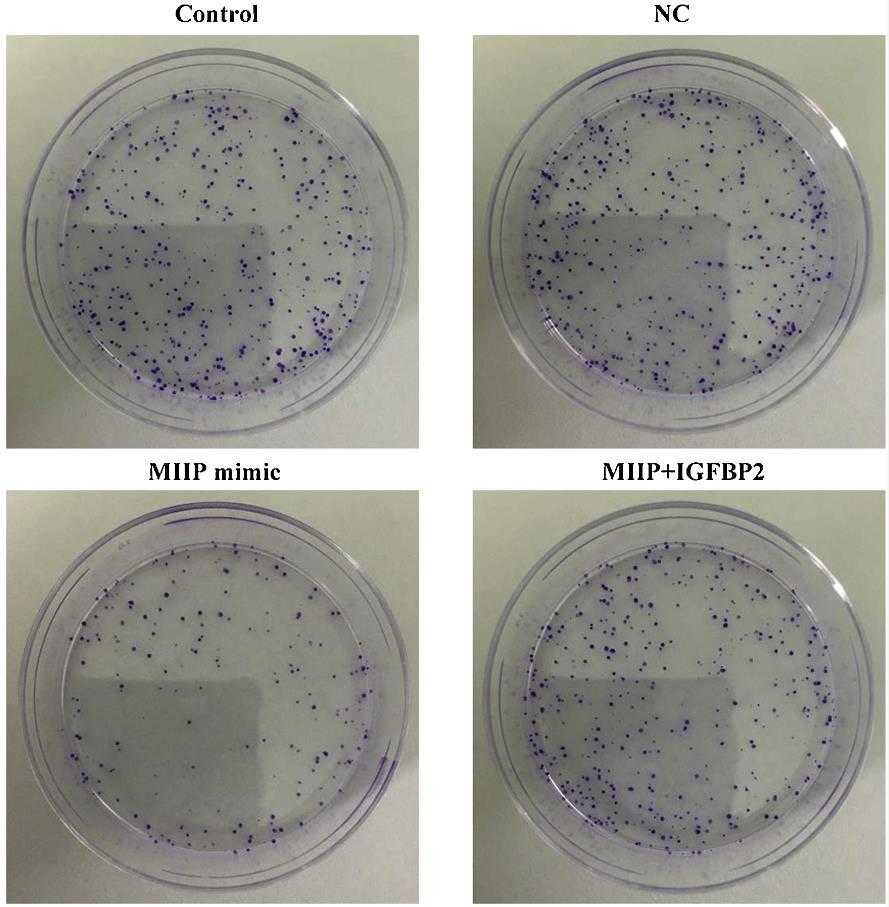
Fig2. The colony formation assay was used to detect proliferation ability of MDA-MB-231 cells.
As a protein that plays an inhibitory role in cell migration and invasion, MIIP is mainly used in medical research and tumor therapy. There are MIIP recombinant protein products on the market, which are mainly used in scientific research areas, such as studying the function of the MIIP protein and its role in cell invasion. Disease research includes colorectal cancer research, tumor immunotherapy and other disease-related research.
As a new drug target, MIIP has a wide application prospect in tumor immunotherapy. It participates in tumor immunotherapy by inhibiting cell migration and invasion and promoting T cell activation. Expression levels of MIIP are associated with a variety of diseases, such as low expression levels in glioma tissue, while another subtype of MIIP is not detected in normal organs, but the expression levels gradually increase during glioma progression. The MIIP protein inhibits glioma cell invasion and down-regulates genes associated with adhesion and movement, such as NFKB2 and ICAM1, which has the opposite effect on cell invasion as IGFBP2.
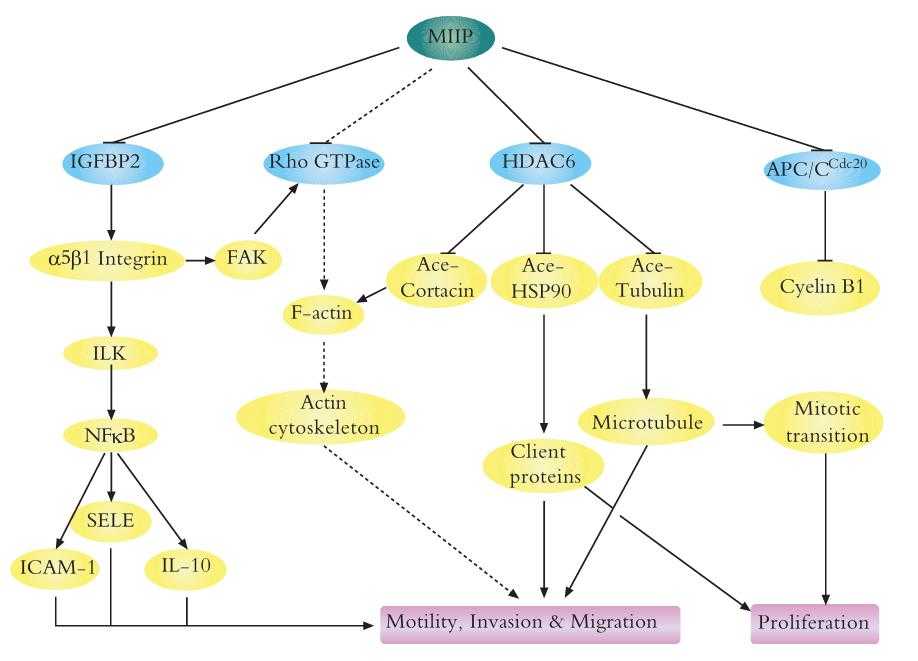
Fig1. Downstream targets of MIIP (IIp45) that regulate cell migration, invasion, and proliferation. (Yingmei Wang, 2011)
Not For Human Consumption!
Inquiry
- Reviews
- Q&As
Ask a Question for All MIIP Products
Required fields are marked with *
My Review for All MIIP Products
Required fields are marked with *
Inquiry Basket


